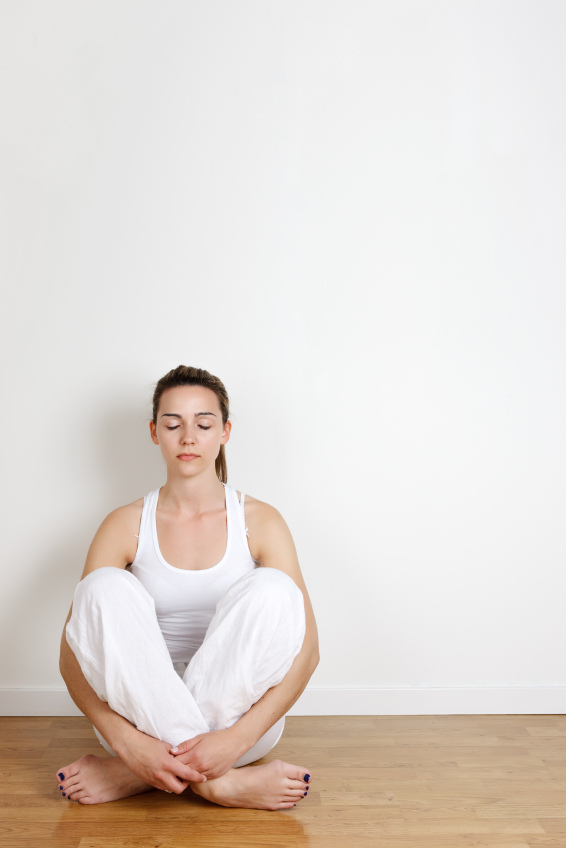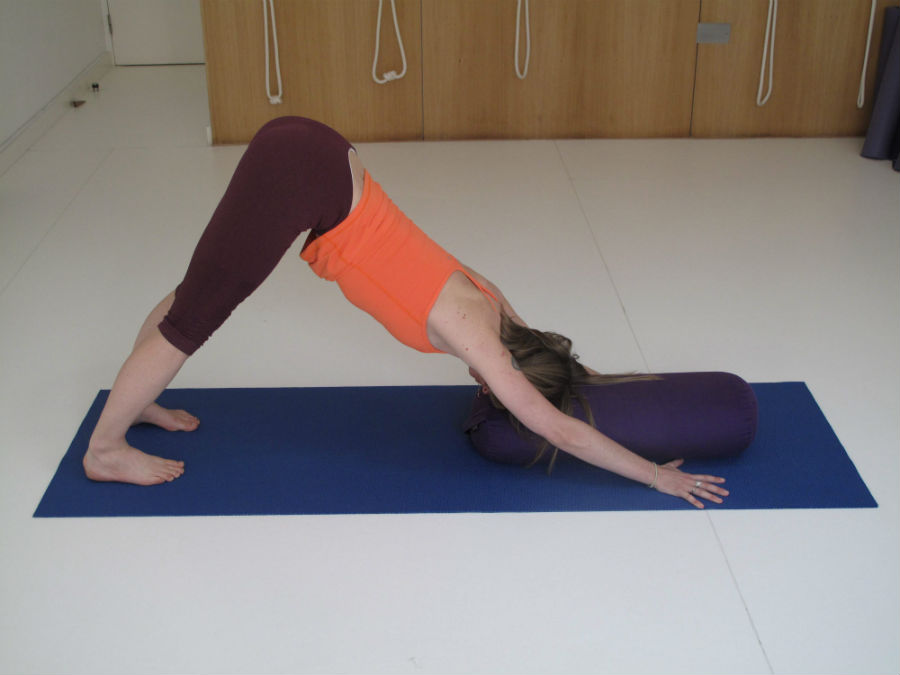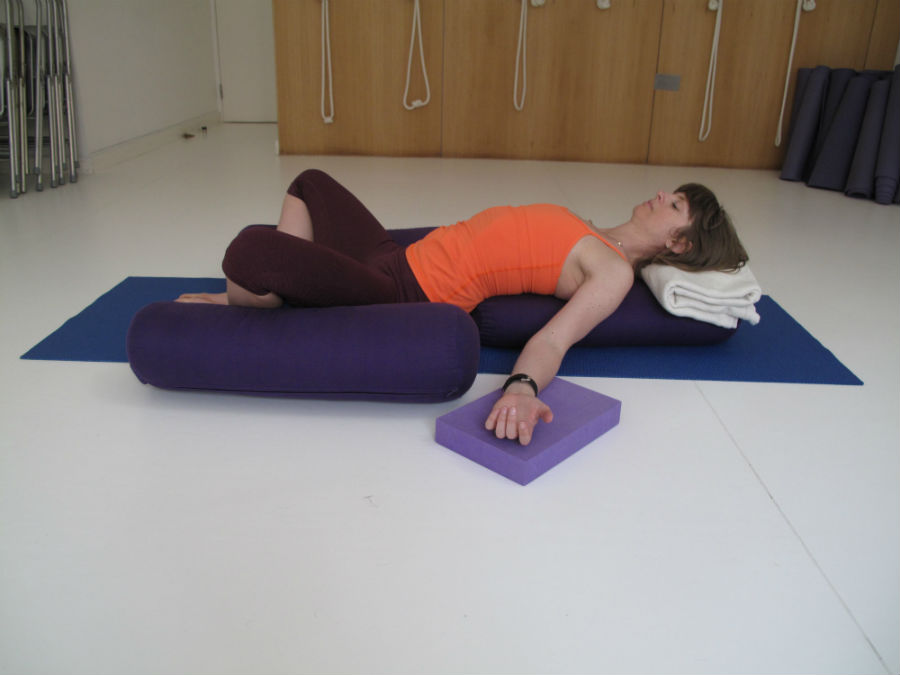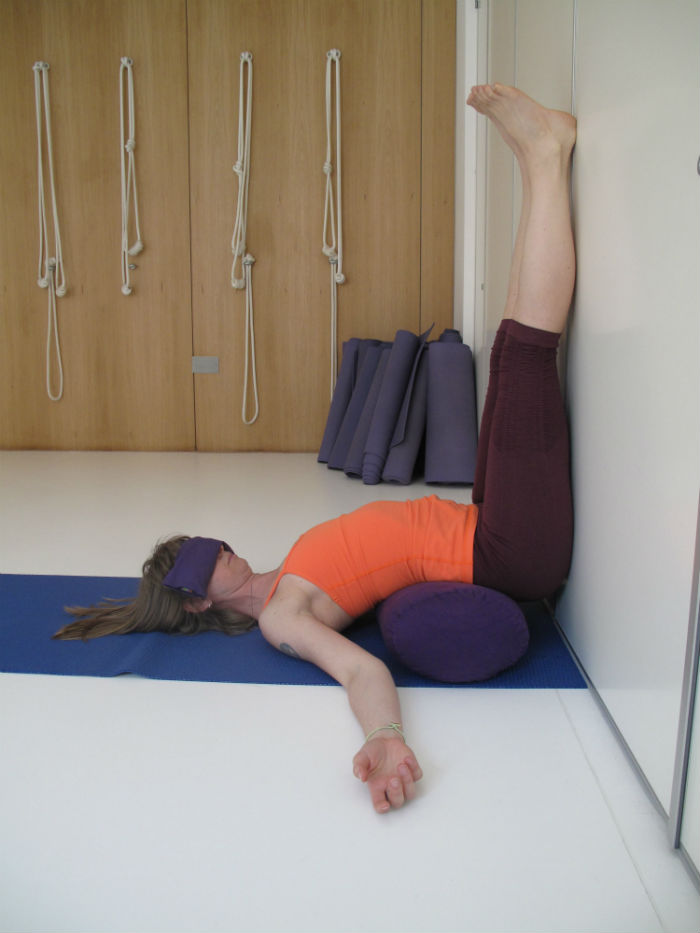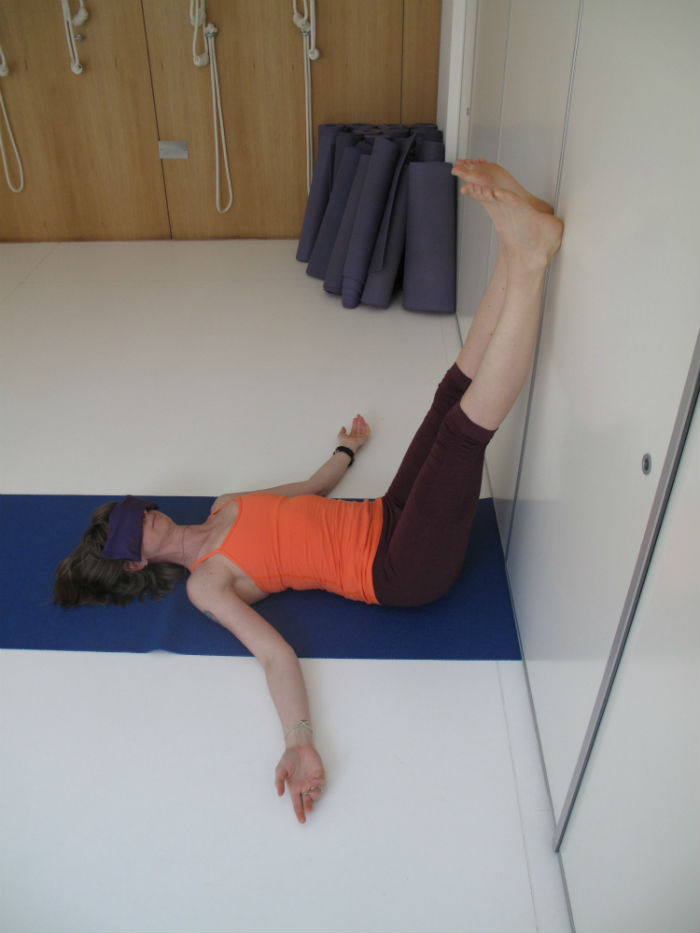Can’t sleep? Too wired to calm down? Leading London yoga teacher Sarai Harvey Smith has the yoga moves and easy breathing secrets to help you get some serious rest tonight
It is well known that some stress is good, as it helps to motivate, get things done and primes the body to escape from danger. But as stress related illnesses such as fibromyalgia, IBS, anxiety and depression are rapidly on the rise, stress has become a serious topic of consideration, especially since the medical profession has little notion yet of how to treat these conditions.
The World Health Organisation predicts that by the year 2020, anxiety and depression will be the number two health problem worldwide, and by 2030, the number one health problem worldwide. These are serious statistics! And many people are turning to yoga as a means of managing stress and to improve sleep, which often becomes disturbed when stress levels rise.
Lack of sleep leads to all the symptoms of stress – increased cortisol levels, and decreased immune and digestive functioning, so stress/sleep disturbance can become a cyclical problem. The best way to combat stress and its related issues, and to improve energy levels, is by doing a restorative yoga practice, which focuses on postures for relaxation with the use of props.
How can yoga help with stress?
Learning to watch and become aware of momentary sensations as they arise in the body, (an integral part of practising any type of yoga), is known as interoception, a scientific term and a big area of research in neuroscience right now. Interoception can be thought of as mindfulness in the body, and works to relieve stress by bringing the mind into the body (often dissociated in anxiety or depressive states) and roots the mind in the present rather than on (often stressful) thoughts of past or future. Over time the body learns that this feels good and a new and more healthy way of functioning becomes assimilated, but also it has the effect of helping to prevent mood states that are emotional and negative.
Balancing the nervous system is key. The aim is not to get rid of stress altogether, as both aspects of the autonomic nervous system, the parasympathetic or rest/digest, and the sympathetic or fight/flight/freeze, need to work together, regulating each other, for healthy functioning.
Simple breathing is the quickest and easiest way to balance an aroused nervous system and alleviate stress. Lengthening your exhalation stimulates the parasympathetic nervous system, responsible for slowing the heart rate and putting the body into a state of relaxation. Inhaling stimulates the sympathetic nervous system (fight/flight/freeze), activating the adrenals to release stress related hormones that prepare the body to run or fight danger.
If we perceive danger, it is in our interest for the sympathetic nervous system to kick in so we can save ourselves. But what goes wrong is that the nervous system gets stuck in this mode. When healthy and working in harmony, once the danger has gone, the nervous system reverts back to parasympathetic arousal ( promoting rest, digestion and relaxation).
Breathing with awareness using the techniques below helps regulate the nervous system and teach the parasympathetic and sympathetic nervous systems to work together. One reason holding yoga postures can help to relax the body and decrease stress, is that when a stretch is held for longer than 20 seconds the body sends a message to the brain that it is safe, which then activates the parasympathetic nervous system.
Yoga practice has been found to lower levels of the stress hormone cortisol, and as a result stress symptoms such as muscle tension, digestion and immune system impairment, and high blood pressure subside. There is just one catch: regular yoga practitioners have not been found to have a lower cortisol baseline, suggesting that yoga needs to be practised daily to gain these benefits.
Can yoga increase resilience to stress?
Yes. Neuroplasticity is the science of body pattern formation (good or bad) and change, so if your body is stuck in a stressful, depressive or anxiety pattern, where the parasympathetic and sympathetic divisions are not working together, but stuck in sympathetic arousal, then even awareness of this in oneself won’t necessarily alter the body’s stress pattern. The suggestion is that the mind can change but the body sometimes stays stuck – this is where yoga helps. Practising regularly sets in motion the reprogramming of neural pathways, replacing stress patterns with healthier ones.
Regulating the nervous system using breathing:
You can do your breathing either when you are in the restorative postures, or you can sit comfortably with your spine straight for five minutes at the beginning or end of your practice.
If you are stressed or anxious, then breathing with a ratio of 1:2 will activate relaxation. That is inhaling for1 (or 2 or 3) counts, and elongating the exhalation for 2 (or 4 or 6) counts.
If you are feeling depressed/lethargic and need to generate energy, then the breath ratio should be 1:1, breathing in and out for equal measures. For example breathing in for four counts, breathing out for four counts. All breathing should be taken in to the base of the lungs and the abdomen, and done through the nose.
4 restorative yoga postures for sleep
Restorative yoga teaches your body to relax fully in a mindful way, and regulate your nervous system so that over time you will be able to inhabit this state off the yoga mat as well as on it.
A restorative practice doesn’t have to be long, just 10 minutes a day in Supta Baddha Konasana (see below) can be highly beneficial, quieting the brain, releasing muscle tension and improving blood circulation. Make sure you support your thigh bones with rolled up blankets or bolsters, this allows the ligaments and muscles of the pelvis, legs and abdomen to fully release.
If you have more time, start in downward dog with head supported, for say five minutes, followed by Supta Baddha Konasana for 10-15 minutes, Viparita Karani for 10-15 minutes, and finish with legs up the wall or savasana for ten minutes. Using an eye bag helps to calm an active mind and stimulates the vagus nerve to slow the heart rate and arouse the parasympathetic nervous system. Here are the moves in depth – brush your teeth, wear your pyjamas, do the moves for however much time you have and then slowly move to your bed.
Downward Dog Head Supported
Start on your hands and knees, hands under shoulders and shoulder width apart, fingers spread wide, middle fingers pointing straight ahead. Put folded blanket or bolster between hands. Knees and feet hip width apart. Straighten legs, and push thighs and shins back, use hands to push weight back into legs. Feet parallel. Rest forehead on bolster or blanket. Lift kneecaps and quadriceps up and keep legs strong. Keep lifting hips up and back. Roll upper arms/shoulders out and descend muscles of the neck towards the hips, arms as straight as possible. Keep lifting inner arms up towards the ceiling, whilst moving the spine into the body, and chest towards legs, keeping the ribs passive (don’t let the rib cage kick out of the front body) this action opens the shoulders and hamstrings. Let the head relax down onto the support. Keep the pose steady and still, breathe evenly and let your brain relax.
Supta Baddha Konasana
Sit on yoga mat and put one bolster under each thigh, with soles of feet together. Make sure legs are completely supported by the bolsters or rolled up blankets. Feet about 1.5 feet from pelvis. Put another bolster behind back, with short edge of bolster up against pelvis. Lie back onto the bolster, and move flesh of the buttocks down towards feet. Rest head on a folded blanket. Arms rolling out, 30 degrees from body, palms facing up. Put a block or folded blanket/towel under each forearm. Close your eyes, completely relax.
Viparita Karani
Put the short edge of your yoga mat against a wall, and lay a bolster long ways at the short edge of your mat, about 2-3 inches from the wall. Lie with your legs up the wall, buttocks against wall and bolster underneath your pelvis and lower back. Your frontal hip bones and lowest ribs should be the same level. If feet slip apart, tie a belt around ankles. Arms 30 degrees from body, rolling out, palms facing upwards. A blanket under your head and an eye bag are optional. Close your eyes, completely relax.
Legs up the Wall
This pose can be practised as an alternative to Viparita Karani if menstruating or if you find Viparita Karani awkward. Start lying on your side, with buttocks against wall and knees to chest. This allows you to get buttocks right up against the wall. Swing your legs up the wall and roll onto your back. You are aiming for buttocks against wall, legs straight up. If this is too much of a stretch for your hamstrings, move buttocks away from wall keeping feet up, until it feels comfortable. If feet slip apart, tie a belt around ankles. Arms 30 degrees from body, rolling out, palms facing upwards. A folded blanket under your head and eye bag are optional. Close your eyes, completely relax.
Sarai is a Senior Teacher with Yoga Alliance (UK) and currently teaches ashtanga, restorative and yoga at Triyoga, Yogaloft, and privately. Sarai has been teaching in London since 2002 and is known for her focus on breath, alignment and technique. saraiharveysmith.com
Follow her on Twitter @Sarai108
Find her on Facebook here
Like this article? Sign up to our newsletter to get more articles like this delivered straight to your inbox.



